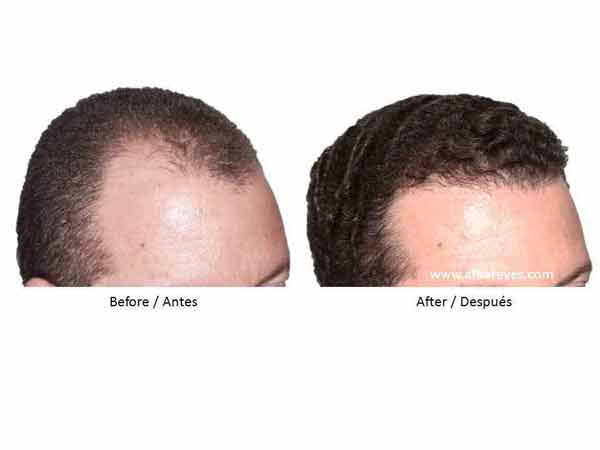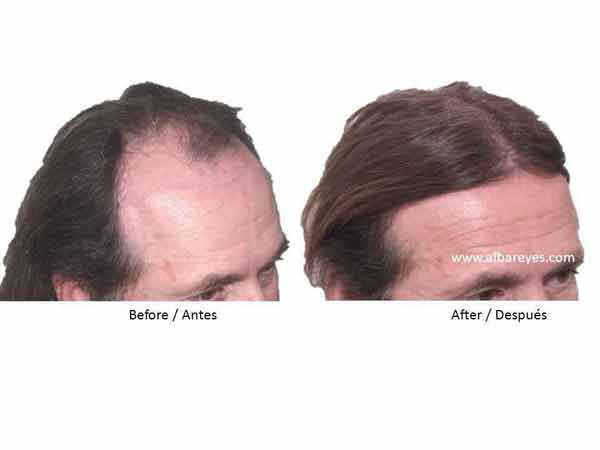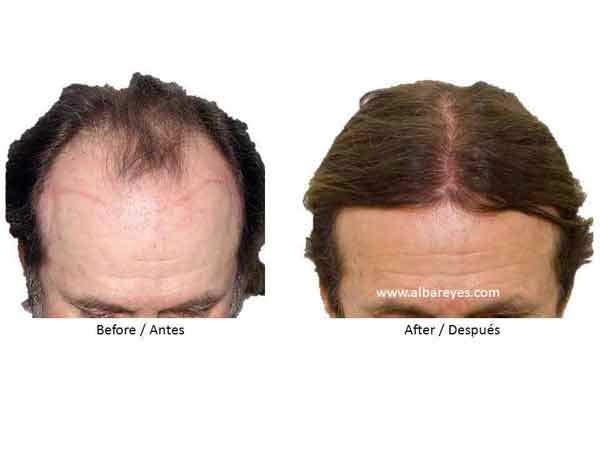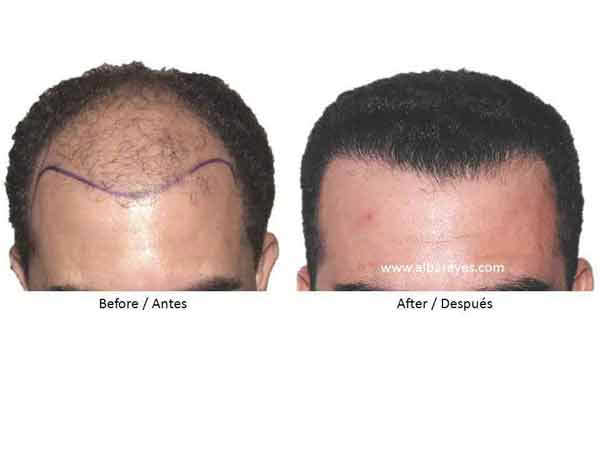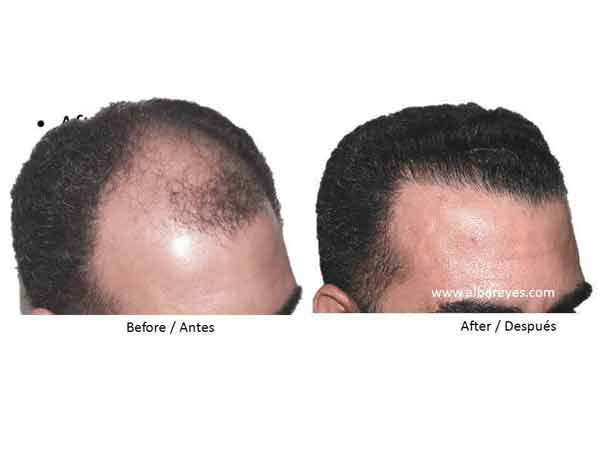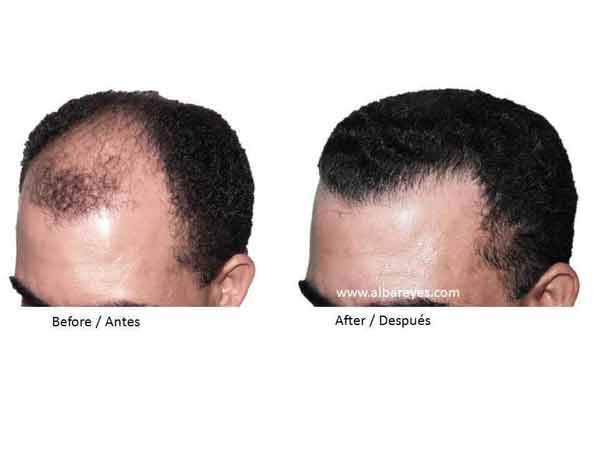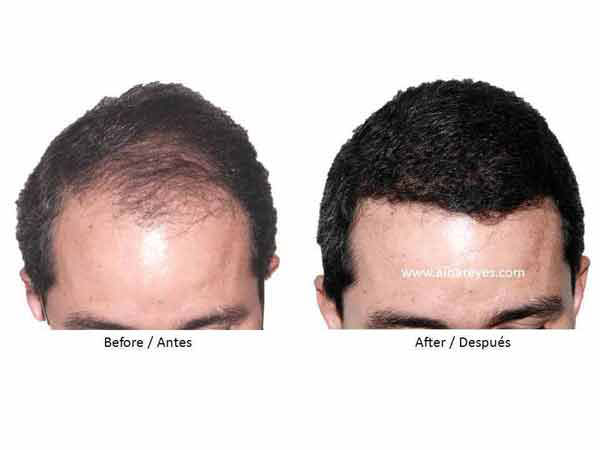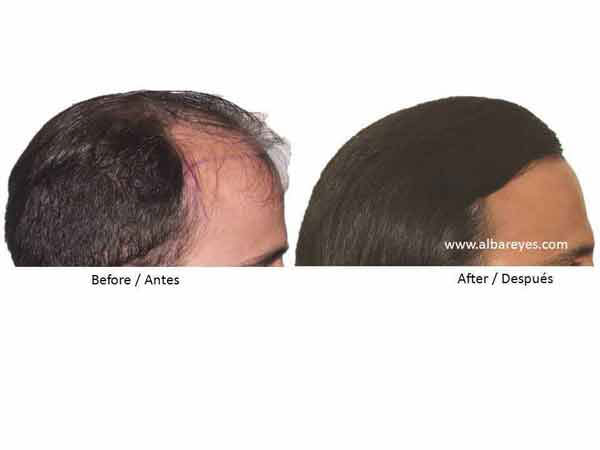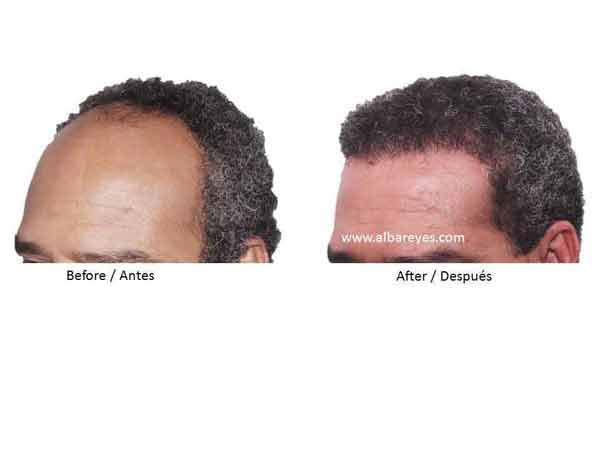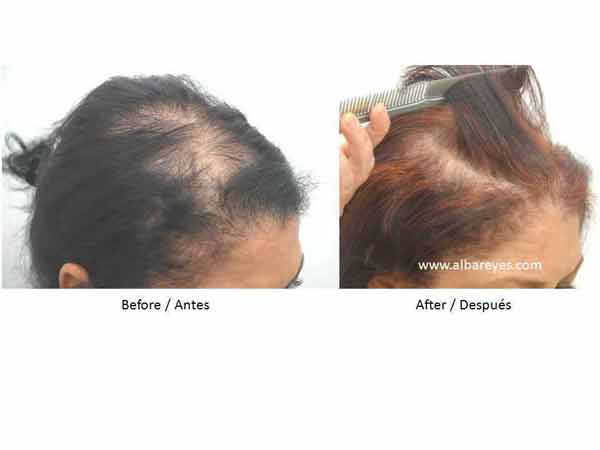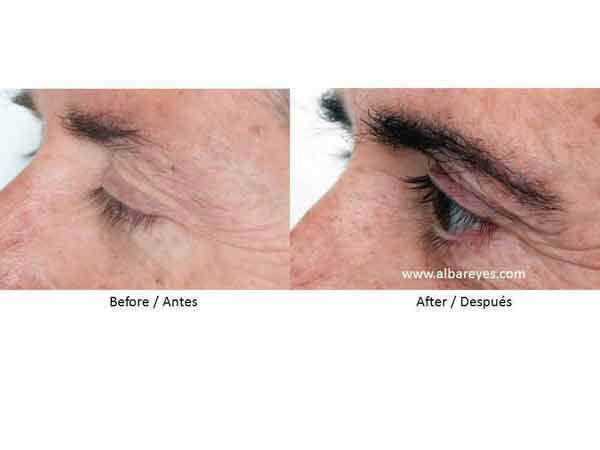If you are a male experiencing hair thinning or with a family history of baldness, then you should take our Genetic Test for Hair Loss because:
- The Genetic Test for Hair Loss will predict your hair loss BEFORE you can see any visible hair loss. As you may know, by the time hair loss or thinning becomes visible, you may have already lost about 50% of your hair.
- Based on the prediction of the genetic test you can take preventive treatment. Based on the results of the Genetic Test, we can suggest the most suitable US FDA approved medication for preserving hair.
Male Pattern Baldness (Androgenetic Alopecia)
The most common form of hair loss in men is “Androgenetic Alopecia“, which is also known as Male Pattern Hair Loss. It occurs in men that are genetically predisposed to hair loss. Therefore, Androgenetic Alopecia affects most men in some way.
90% of men over 21 years have some hair recession in the area of hair entrances in the front, and 50% of men over 40 years have some hair loss on the head crown.
In other words, 9 out of 10 men (under 40 years) suffer from hair loss in the frontal area and sides of the head and 5 out of 10 men (over 40 years) suffer from alopecia in the frontal and crown area of head.
The following figure shows the typical progression of Male Pattern Hair Loss.
Test Analysis and Results
How are the Genetic Test results used for predicting hair loss?
The genetic test for male pattern baldness provides information on the presence of a specific variant in the androgen receptor (AR), located on chromosome X.
This AR variant causes changes in the hair follicle in response to dihydrotestosterone (DHT) leading to alterations in the growth cycle of hair.
If the genetic test finds the variant is “A”, it means a 70% chance of not developing androgenetic alopecia, and if the genetic test finds that the variant is “G”, then it means a 70% chance of developing androgenetic alopecia.
Our Genetic Test for Male Pattern Hair Loss reports the presence or absence of a specific variation in the Androgen Receptor (AR) gene:
- A positive test result means that a man has the high risk genetic variation
- Men who test positive have approximately a 70% chance of going bald
- Men who test negative have approximately a 70% chance of not going bald
To learn more about genetic tests or to schedule a test, please contact us.
Men who are at high risk of hair loss should contact us to develop a plan to detect, monitor and treat early forms of alopecia.
In contrast, men with a negative test on the high risk genetic variant can be reassured that their risk of developing male pattern baldness is low. This would avoid unnecessary treatments or concerns.
It is important to note that genetic testing of Alopecia is a screening test, not a diagnostic test. The test is used to detect the risk of androgenetic alopecia. It is also important to remember that there are other possible causes of hair loss, irrespective of whether the genetic test results are positive or negative.
Security & Privacy
There are no known risks associated with the use of our genetic tests. The analysis is performed in the USA through CLIA certified laboratories (Clinical Laboratory Improvement Amendments), which ensures compliance with legislation on data protection.
Clinical Studies Behind The Genetic Tests For Male Pattern Baldness (Androgenetic Alopecia)
Recent advances in the field of human genetics have helped researchers to discover the genetic causes behind hair loss and baldness. And we aim to help you with the latest genetic discoveries.
Although the causative genes for androgenetic alopecia (AGA) are not fully decoded, the evidence shows a polygenic model based on the fact that the theories of simple, autosomal inheritance (through observable hair loss patterns) are not yet fully proven scientifically.
The evidence against an autosomal pattern lies in the incidence of phenotypic AGA gene in families that do not conform to the modal distribution normally seen or expected. The hypothesis of a gene trigger estimated incidence in the range of 1:1000, much less that the high rate of men affected as observed in population studies.
Extensive research has been done to identify genes that cause hair growth, and genetic factors and mechanisms associated with hair loss.
However, tests to discover the association between genes suspected of causing their AGA have consistently failed, with one exception. There have been 4 published studies involving 2000 patients that document the association between genes and gene AGA androgen receptor (AR) on chromosome X.
It has been demonstrated that a particular polymorphism (or allele variant) in the area of the AR may be related to a high risk of developing AGA (around 70%) and, inversely, a protective allele, has associated with a low likelihood of AGA (70% chance not to develop AGA).
The value of this genetic test is that it provides reliable results that are a screening test to study the risk of developing the AGA gene much before symptoms are visible.
The genetic test also offers the possibility that patients with allele A, and an accredited family history of AGA gene know that they have the risk of developing AGA is however small.
One should use a confirmatory test to determine the need for medical therapy to prevent hair loss in future. These tests include confirmation “test run” or a new “tricometrico method” to study the ratio between Anagenes: Telogenes (A:T ratio)
The A:T ratio would be normal between 1 and 12, and as the AGA gene advances, this rate would be reduced to a ratio of 5 to 1.
Question: Although the sensitivity of this genetic screening test is high, its specificity reduces its predictive value, so how is this test be more reliable test than the mere visual observation?
Answer: Firstly, studies have shown that men are quite reluctant to visit their doctor unless they really think that something is wrong and the symptoms are visible, which would be rapid hair loss or balding that starts becoming visible. (2007, Harris Interactive online survey, for AAFP)
In addition, many patients lose hair very gradually, regardless of the hair falling in the wash basin, the pillow or clothes, and thus will not realize that there is a continuous hair loss until it is well advanced.
The test gives the patients the opportunity to verify the risk of hair loss, and enables you to examine your options, and thus resort to suitable medication.
Otherwise, some patients may suffer a rapid hair loss in an accelerated manner without falling hair miniaturization, which happens in gradual hair loss. Such patients require rapid intervention to stop the hair loss, and without prior planning this would be very difficult.
The commercial success of many hair loss treatments that are ineffective and unproven suggests that many patients do not know how to evaluate hair loss treatment options, or maybe their doctors have not advised properly.
Moreover, while it is true that some patients who begin a medical therapy need not develop a sharp hair loss or undergo medical therapy with surgical hair restoration, there will always be people who do not seek medical assistance despite known risks. We can understand better with this analogy: it is well known that low cholesterol foods have saved the lives of many people, but they have not eliminated the need for heart surgery. Similarly, hair restoration surgery will continue to be the most effective procedure, in the near future, to restore hair after hair loss or balding.
We will continue to offer our patients with the latest scientific advances. You are welcome to contact us and learn more about our Genetic Tests for Hair Loss.
Bibliography
1. Ellis, J., et al. “Polymorphism of the androgen receptor gene is associated with male pattern baldness.” J Invest Dermatol 2001 Mar; 116 (3):452-455.
2. Levy_Nissenbaum, E., et. al. “Confirmation of the association between male pattern baldness and the androgen receptor gene.” European Journal of Dermatology, 2005, Vol 15, No. 5, 339-40.
3. Hillman, A. et.al. “Genetic Variation in the Human Androgen Gene is the Major Determinant of Common Early-Onset Androgenetic Alopecia.” American Journal of Human Genetics, 2005 (77): 140-148.
4. Prodi, D. A., et al. EDA2R Is Associated with Androgenetic Alopecia. Journal of Investigative Dermatology advance online publication, 3 April 2008, doi: 10.1038/jid.2008.60.
5. P. Tang H., et al. A community study of male androgenetic alopecia in Bishan, Singapore. Singapore Med J 2000 Vol 41 (5): 202-205.
6. Bergfeld, W. F., et al. Androgenetic alopecia: an autosomal dominant disorder. Am J Med 1995 Jan 16; 98 (1A): 95S-98S.
7. Desmond, C. C., et al. Prevalence of Male and Female Pattern Hair Loss in Maryborough. Journal of Investigative Dermatology Symposium Proceedings (2005) 10, 184-189, doi: 10.1111/j.1087-0024.2005.10102.
8. Demuro-Mercon, C., et al. Male-Pattern Hair Loss in Norwegian Men: A Community-Based Study. Dermatology 2000, 200:219-222 (DOI: 10.1159/000018386).

















